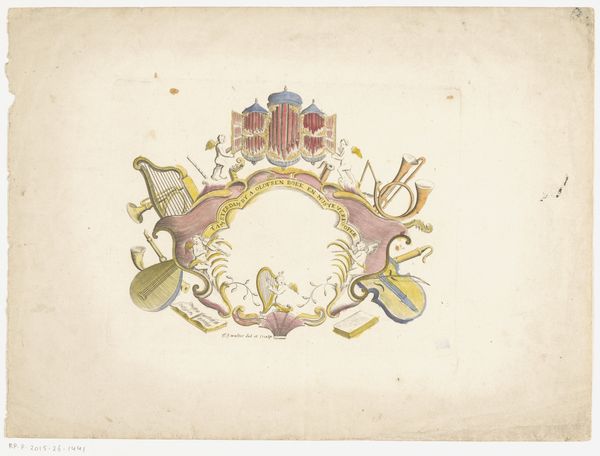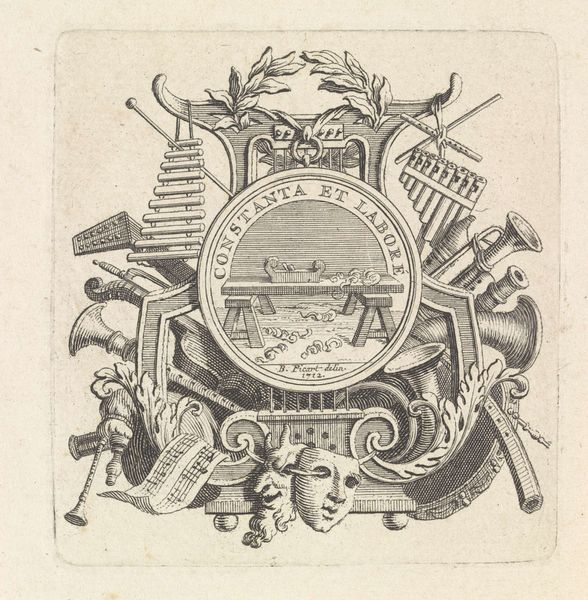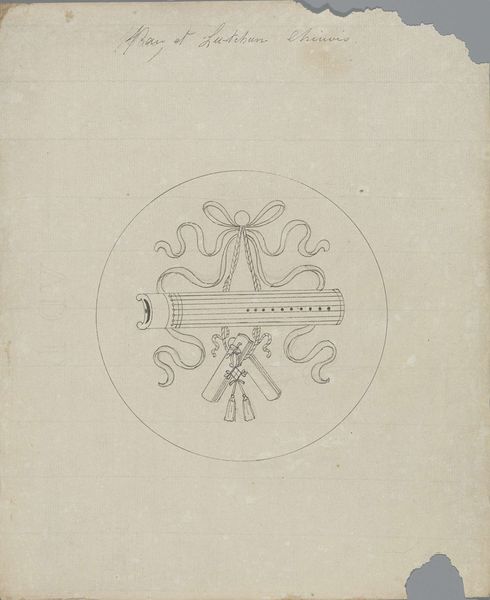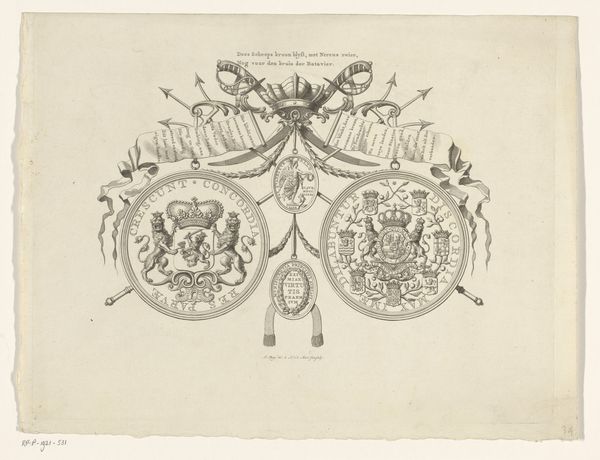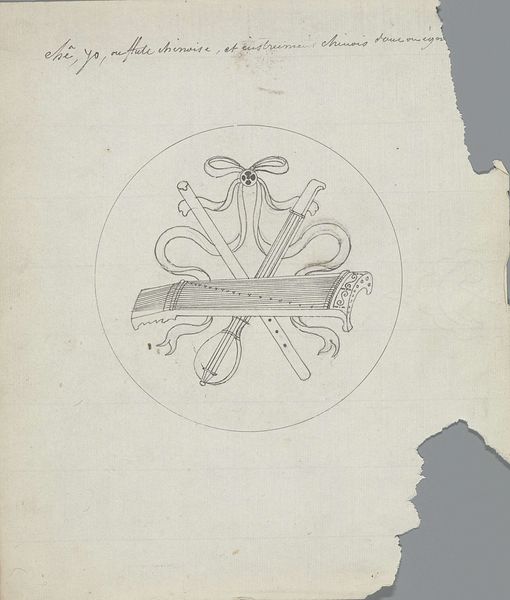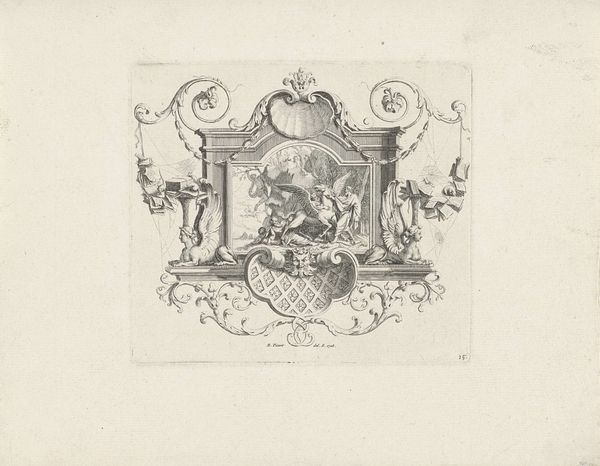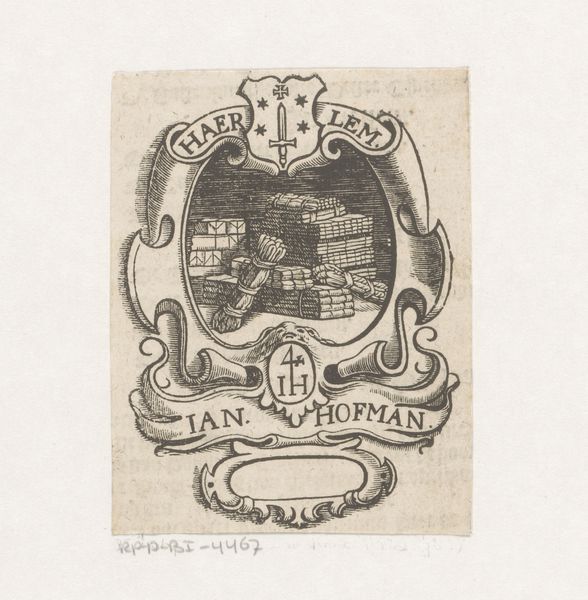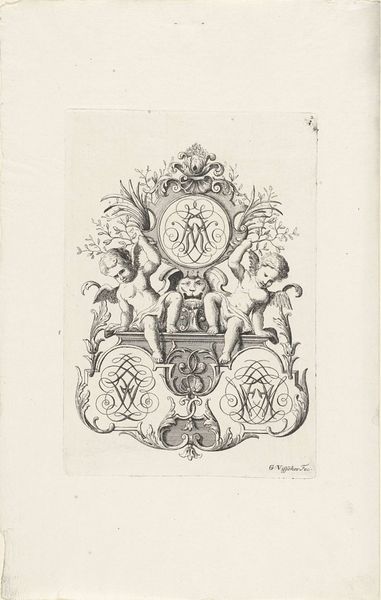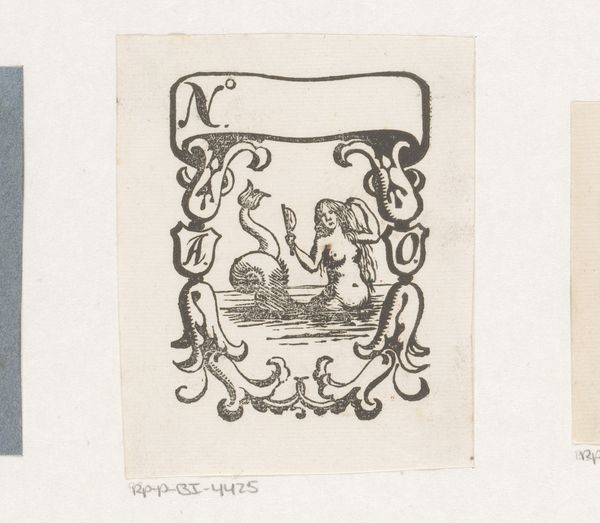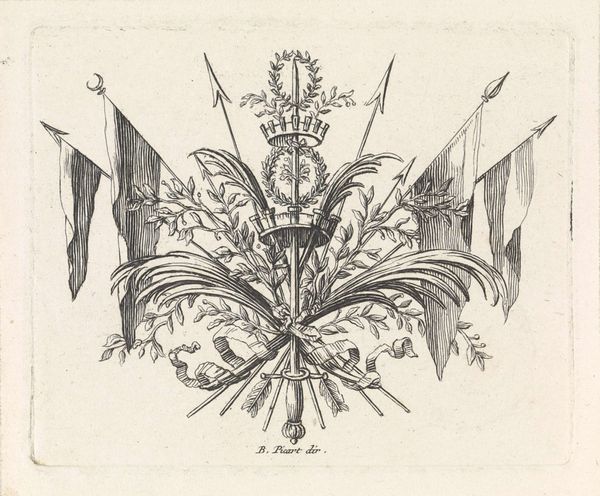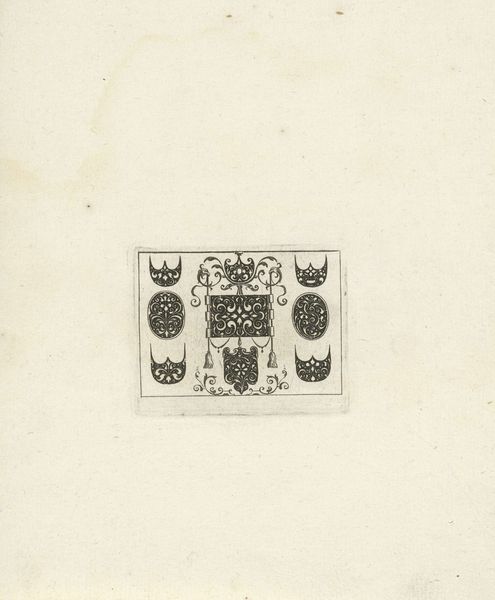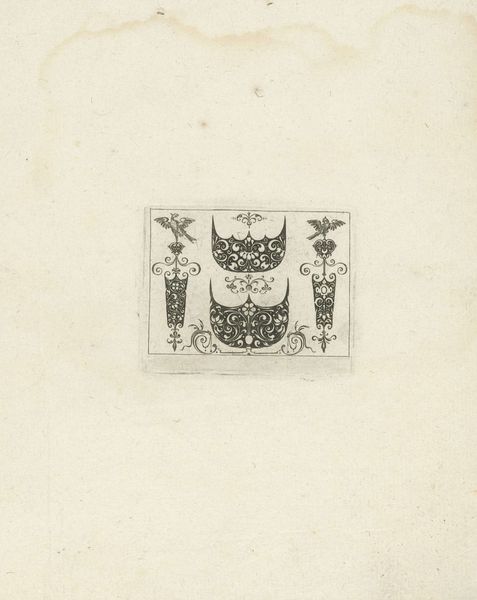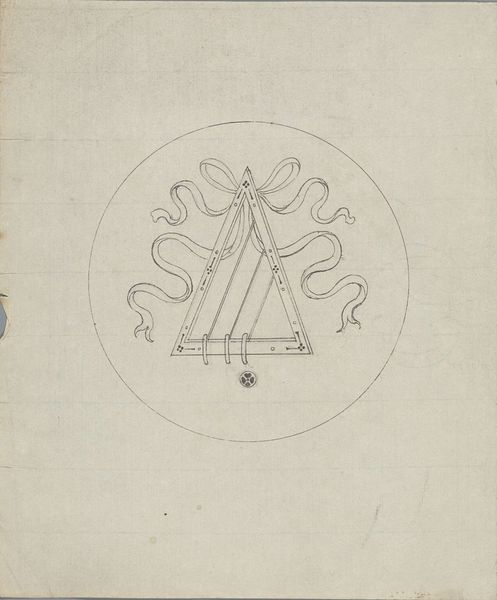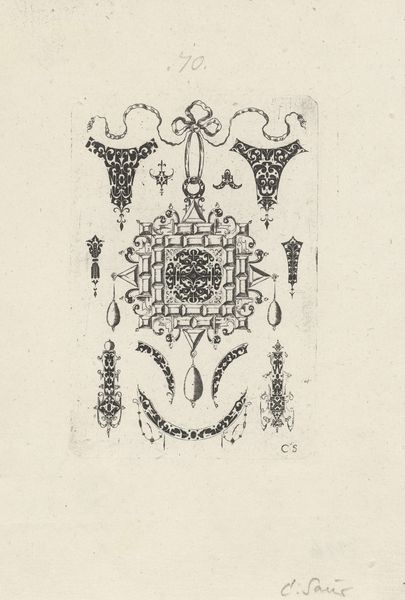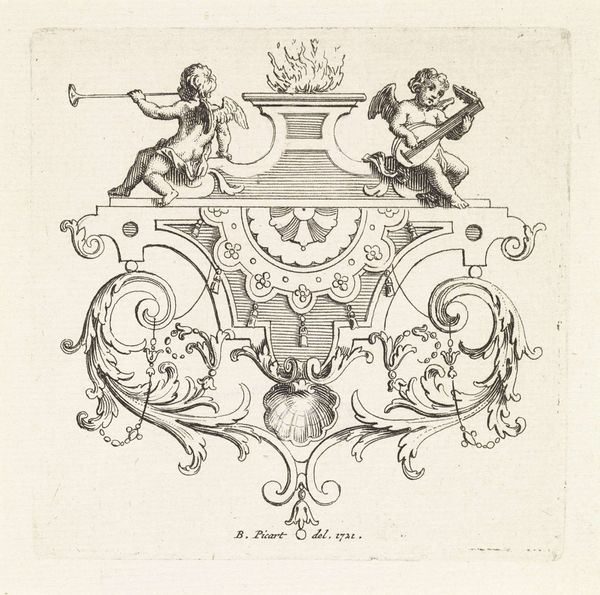
drawing, graphic-art, print
#
drawing
#
graphic-art
# print
#
figuration
#
symbolism
#
history-painting
Dimensions: height 327 mm, width 400 mm
Copyright: Rijks Museum: Open Domain
Curator: What a curious print. I’m intrigued by "Het metalen kruis" or “The Metal Cross” dating sometime between 1848 and 1881. The medium is listed as graphic art on paper; a historical depiction currently held at the Rijksmuseum. And you know what grabs me right away? It feels… festive, almost like a party favor commemorating something. Is it ironic, perhaps? Editor: Indeed. It's strangely buoyant for a depiction of a metal cross, almost frivolous with its pastel wash and tumbling dice. It reminds me of a commemorative kerchief printed to mark a local event but raised to the level of state symbolism. Those Dutch national colors twisted like ribbon candy seem a touch theatrical, maybe a little ironic considering what it represents. Curator: That’s interesting. The dice— such an odd juxtaposition with the central cross marked ‘W’ perhaps for King Willem – remind me of games of chance or maybe the risks and rolls of fate. Almost feels like it suggests the fortunes of war and valor or something similarly profound. I almost find myself searching to locate something that explains what seems like some hidden association. Editor: Perhaps it signifies how wars are gambles, where men and nations roll the dice? The "Metal Cross" itself was a medal for veterans who served in specific campaigns in the Dutch East Indies. The ribbons with dice could playfully acknowledge that some valorous campaigns relied a bit too much on blind luck and fate. Or perhaps mocking the reliance on divine providence. What’s compelling here is how traditional symbols blend with an element of irreverence. Curator: I love that. Divine providence. Blind luck. You really tease out something hidden here; it’s delightful. The image carries its solemn weight with a lightness of being that's almost unnerving – yet profoundly human. This interplay of gravitas and levity speaks to the nuanced and complicated way we, even back then, remembered. Editor: Yes! I also think the piece speaks to collective memory, almost as an absurdist memorial. Instead of marble statues or solemn engravings, the image presents national memory as a party favor, an occasion where symbolism dances with a whisper of humor. In some ways, its emotional effect comes from that clash.
Comments
No comments
Be the first to comment and join the conversation on the ultimate creative platform.
